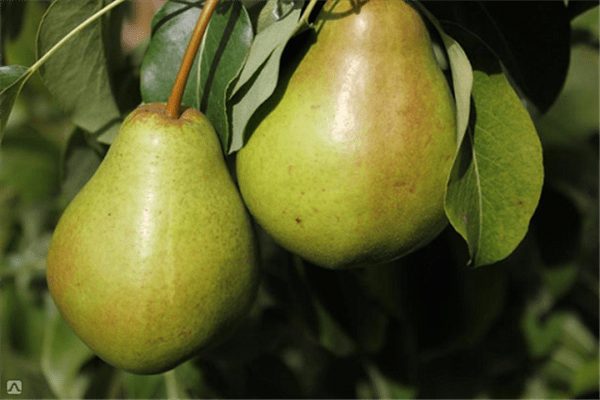Pear Far East
Content:
Pear Far East was bred by the breeder A.V. Bolonyaev. by crossing the Chinese pear Dan-San-Shui and the Tema variety. This species is considered a complex hybrid and gives excellent indicators of frost resistance, fruit ripening rate and yield. Best of all, the Far East pear variety shows itself when erected in the Primorsky District or in the southern side of the Khabarovsk Territory. When growing a variety, in other parts of our country, it is worth planting the Ussuri pear tree or using the stanza method of growing.
Pear Far East: variety description and characteristics

Pear Far East: photo of the variety
- Wood.
Pear tree of the Far East of medium growth intensity. The crown is not dense and wide-oval. The main skeletal branches are attached to the trunk with whorls. During fruiting, the crown becomes more spreading. The color of the trunk, branches and bark is brown-ash. Fruits are formed on shoots 2-32 years old, the bark is rough.
- Branches.
Shoots are not long, medium-sized, straight, without protrusions and roughness. The buds are not large, oval, slightly pointed, semi-flattened. The foliage is not dense. The leaf plates look up, medium in size, oblong in shape. The petiole and lamina are medium in size.
The flowers are not large, snow-white, the corolla is cup-shaped, the petals are round. The location of the pistils is just below the level of the anthers. The maximum yield indicators are given in the vicinity of Lukashovka varieties and similar ones.
- Fruit.
Dalnevostochnitsa pears are not large, rather small. Weight varies from 82 to 105 grams. The elongated, slightly curved peduncle holds the fruit of the corresponding shape (pear-shaped). Pears are formed in clusters of no more than five 5 pieces per one. The skin is smooth, almost without irregularities, the only exception is the area at the stalk. The color is solid, rich yellow, without changes and manifestations of blush on the side of the fruit that is turned towards the sun. The entire surface of the fetus is covered with brown dots located subcutaneously. There are practically no funnels. The saucer is of medium size, the cup is half-open.
The pulp of the Far East pear variety is abundantly saturated with juices, white-beige color, the taste combines acidity and sweetness, but in proportions that only complement each other with a subtle characteristic aroma.
Dalnevostochnitsa pear variety is in the top ten in terms of its taste among the varieties of this zoning.
Features of the variety

Pear Far East: photo of the variety
The chemical composition of the Far East pear variety includes:
- 14% dry matter
- 12.5% fructose and other natural sugars
- 0.8% acids and their salts
- 0.6% tanning agents
- 0.3% pectin
Full ripening of the fruits occurs by the last days of September. With proper storage, the crop is suitable for use up to one and a half months in rooms without refrigeration, and up to two and a half months in refrigerated chambers. The purpose of the variety is a table, ideal for composting and harvesting dried fruits.
The Far East pear bears fruit for the fourth year from the moment of disembarkation to a permanent place. Produces a stable harvest in the sixth or seventh year. An adult tree gives up to twenty kilograms of pears from one plant. Highest level of scab disease resistance. Does not interrupt annual fruiting.
Pear Far East: advantages and disadvantages
- pros pear varieties Far East.
It tolerates winter temperature changes well, grows in direct sunlight without the formation of burns, stable yield, in the territories of the North-East and South-East, the fruits come to consumer maturity at the end of autumn. They are direct competitors to the varieties of Chinese imports. High immunity to scab.
- Minuses pear varieties Far East.
Short storage period, low frost resistance when grown on islands washed by rivers and coastal lowlands.
Due to its taste characteristics, the variety is often used for crossing and breeding new varieties. In the course of the experiments, Lukashovka is most often crossed with the pear, but the interest of the sectioners is unlimited. It is best to grow the Far East pear in summer cottages and in mixed gardens.



